Diving right in: what you eat is either helping or hurting your hormones. In other words, your diet plays a significant role in hormonal production (and maintaining healthy hormonal balance!). The right foods—and the right balance of these foods—can ensure happy hormones. Au contraire, consuming too many inflammatory oils, processed foods, and sugar can cause imbalances. In turn, wreaking havoc on your body. This hormone balancing diet plan will empower you to take the health of your hormones into your hands. Food is fuel, pleasure, joy, and culture, but it’s also medicinal. Use it to your advantage to bring your body into balance.
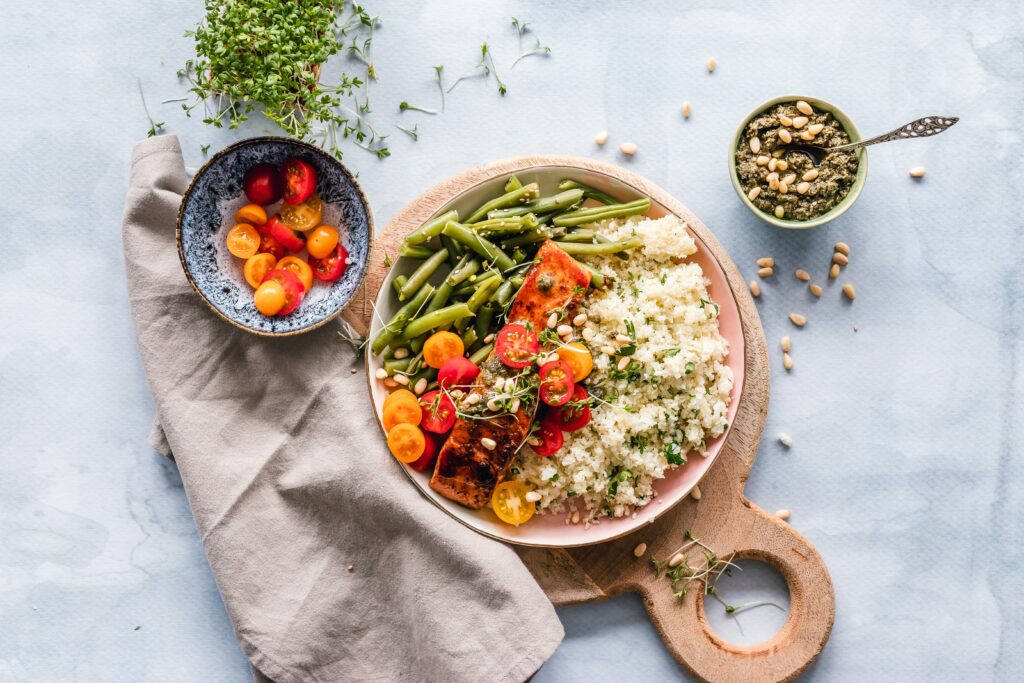
why are hormones important?
For everything! Hormones are your body’s chemical messengers. They’re produced by your endocrine system. They control practically all major processes. Hormones regulate growth, sex drive, sexual development, reproduction, sexual function, metabolism, fertility, and thirst—among other things. Simply put, they let the body know what to do (and when to do it), so it will run smoothly. When all is in homeostasis, your body functions properly. In turn, you operate at your maximum! However, when your hormones are unbalanced, things can go awry. Think: unwanted weight gain, an irregular period, PCOS, low libido, digestive woes, poor sleep, PMS, and more. While the endocrine system is complex, there are simple things you can do to support your hormones.
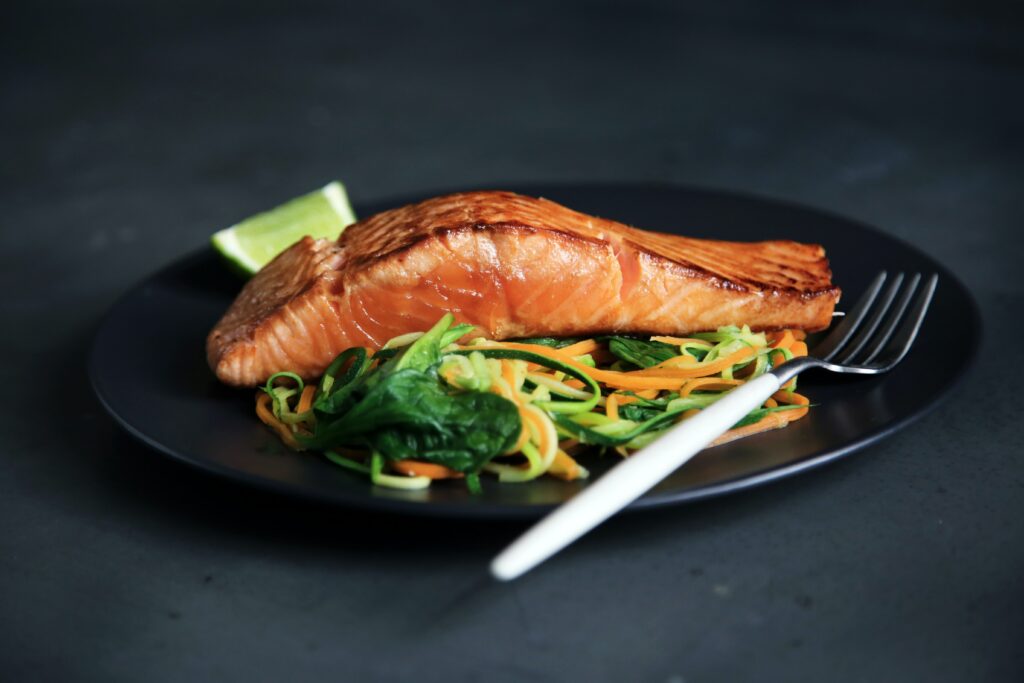
How to balance your hormones, NATURALLY
Before we dig into the specifics of a hormone balancing diet plan, let’s talk about how to balance hormones. Generally speaking, you want to focus on an anti-inflammatory, nutrient-dense diet. You want to remove endocrine disruptors from your home and inflammatory oils from your pantry. Incorporate stress relief habits, and take the necessary steps to get your gut health on track. If you’re feeling overwhelmed, start small. Begin by getting blood work done. A hormone panel will give you insight into specific supplements for hormonal imbalance. Next, consider your diet. Swap refined carbs for sweet potatoes, 100% whole grains, and quinoa. The following week, commit to moving your body for 20 minutes every day (yes, walking counts!). The week after, begin a daily meditation practice. One step at a time.

MENSTRUAL CYCLE REFRESHER
Each month—during the years between puberty and menopause—a woman’s body goes through a number of changes. In essence, to get ready for a possible pregnancy.
This series of hormone-driven events = the menstrual cycle.
• menstrual: the start of your period
• follicular: 7-10 days leading up to ovulation
• ovulatory: 3-5 days of ovulation
• luteal: 10-14 days before your period
During each menstrual cycle, an egg develops and is released from the ovaries. The lining of the uterus builds up. If a pregnancy doesn’t happen, the uterine lining sheds during a menstrual period. Thus, the cycle starts again. The length of each phase can differ from woman to woman, and it can change over time. Just like the seasons, a woman’s menstrual cycle has four distinct phases: menstrual, follicular, ovulatory, and luteal.
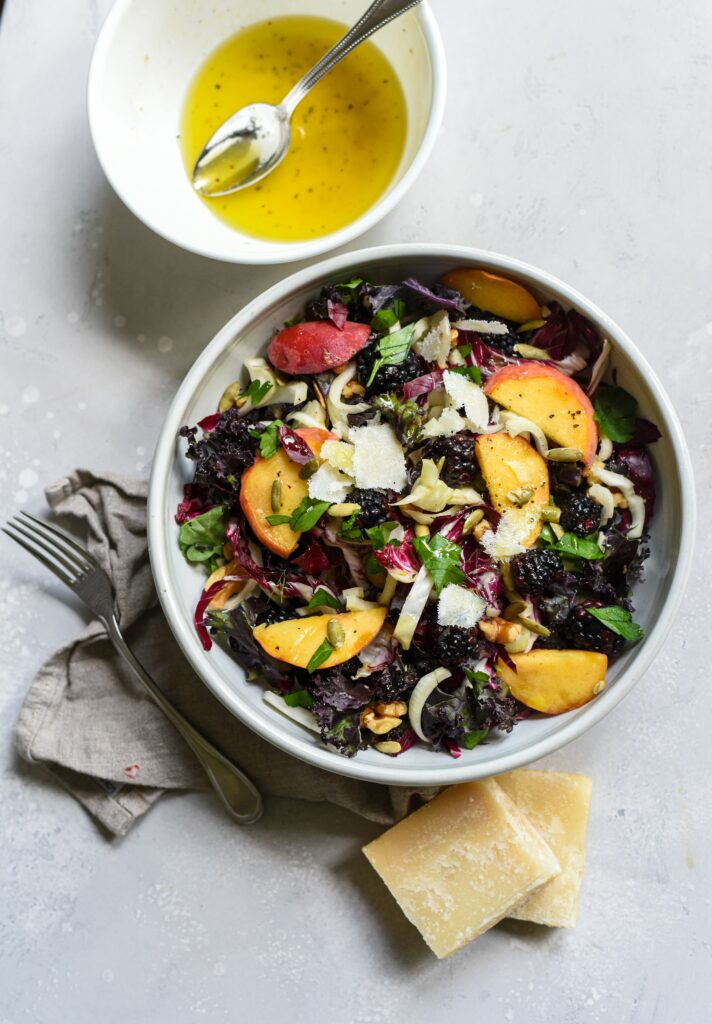
MENSTRUAL PHASE: Foods to eat
This is the start of your period. Hormones are at an all-time low at the beginning of your cycle. Your body is losing blood and iron. Prostaglandins (which cause cramping) are peaking. You probably feel more inward, slow, and restful here. Focus on nourishing, warming foods that build iron, assist in iron absorption, and are anti-inflammatory to fight cramps. Beef, fish, and poultry (liver is also a fantastic source!) are great. In terms of spices and herbs, think: turmeric, ginger, cinnamon, cayenne, cardamom, cumin, garlic, parsley, and curry. Load up on a variety of plant foods: spinach, chard, kale, collard greens, broccoli, mushrooms, beets bell peppers, lentils, pinto beans, kidney beans, chickpeas, citrus fruits, strawberries, cherries, pineapple, mango, papaya.
FOLLICULAR PHASE: foods to eat
During this phase, which overlaps with the menstrual phase, hormone levels are starting to rise. Energy begins to pick up. Load up on vitamin B-rich foods (100% whole grains, meat, eggs, dairy, nuts and seeds) support the follicular phase. Protein and cruciferous veggies (broccoli, cauliflower, cabbage, etc.) are important during this time as they support estrogen detoxification. Foods high in vitamin E—such as sweet potatoes, olives, olive oil, green leafy veggies, and nuts and seeds nourish growing follicles. We are also more insulin sensitive, so our bodies can tolerate more carbohydrates, particularly if you’re increasing your strength training.
OVULATory Phase: Foods to eat
Around days 11-14 of your cycle, you should ovulate. Estrogen peaks, and most women feel vibrant and sensual. Libido peaks around ovulation, too! Cervical fluid changes. It’s possible to experience some fluid retention around ovulation, as well as mild constipation, crampiness, or nausea. Along with other foods that support the follicular phase, opt for fiber-rich foods and plenty of water to reduce fluid retention. Parsley, celery, and green tea can help. Foods rich in B-vitamins help a woman’s body release an egg—leafy greens, wild-caught salmon, eggs, legumes, and grass-fed beef. If you’re seed cycling, you’ll eat ground flax and pumpkin seeds until the end of this phase.
LUTEAL PHASE: foods to eat
Progesterone is on the rise. This is our fat-burning, temperature-regulating, pro-gestational hormone. Towards the end of this phase, PMS symptoms may begin. Typically, hunger levels go up and we tend to crave salty, carb-rich foods. Up your hormone-loving fats! Sunflower seeds and tahini are helpful as they help with estrogen detox. Hence why you switch to these seeds if you practice seed cycling! Magnesium-rich foods, such as spinach, dark chocolate, legumes, avocado, banana, raspberries, wild-caught salmon, and tuna help alleviate PMS. Hunger levels are typically quite high during this phase. It’s normal to crave more food! Reach for an extra snack to nourish your hard-working body.
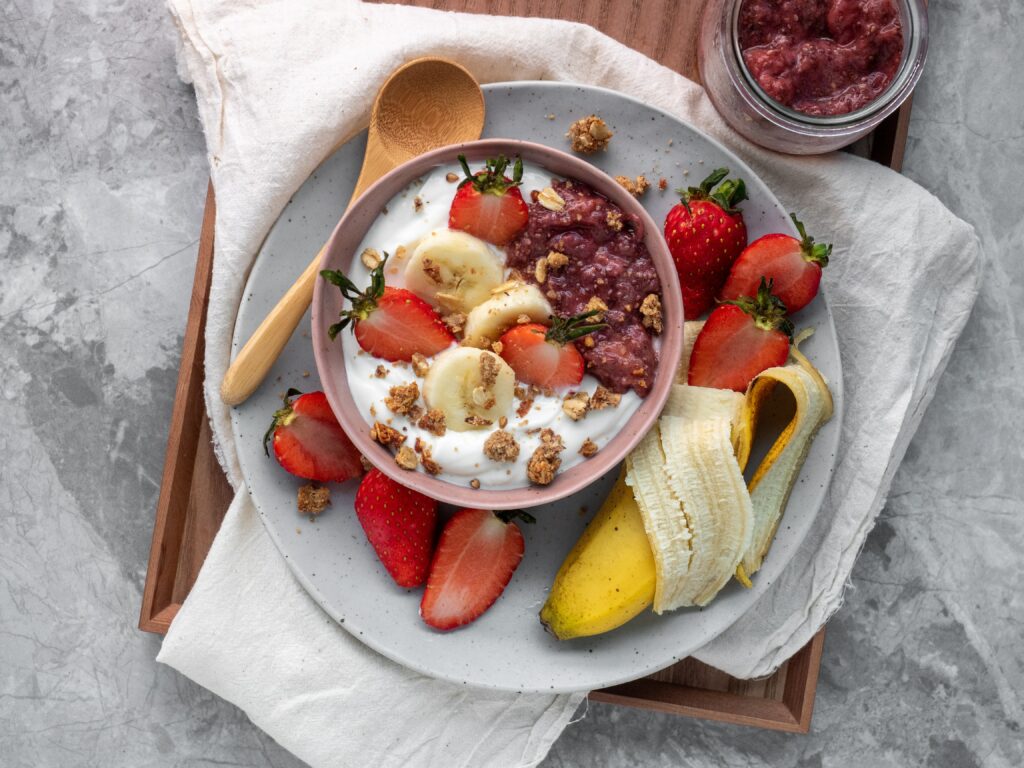
Hormone balancing diet plan
Without further ado, below are the best foods to eat on a hormone balancing diet plan. Incorporate these nourishing ingredients for breakfast, lunch, dinner, and snacks! They’re rich in nutrients, help balance blood sugar, and can be incorporated in a variety of ways.
1. avocado
All hail the mighty avocado. Eating a varied, seasonal diet—including fatty acids—is important for balanced hormones. After all, healthy fats are hormone builders. In other words, hormones are produced using good fats. Without sufficient dietary fat, women’s bodies don’t have the building blocks to make hormones. How much fat you need, on a daily basis, is unique to your body. But as a good rule of thumb, incorporate 1-2 sources of healthy fats per meal. Snacks, too! And of course, make sure you’re eating enough. Rich in monounsaturated fats, along with fiber, potassium, magnesium, vitamin E, B vitamins and folic acid, avocados are critical for maintaining hormonal balance.
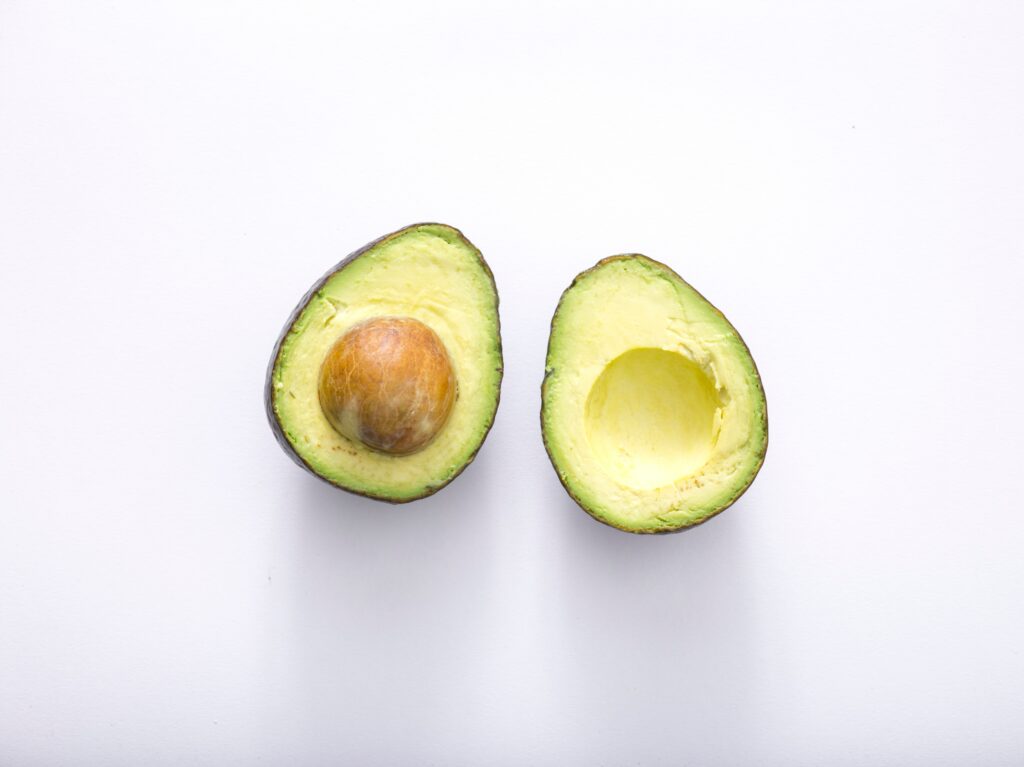
2. COCONUT
Another source of healthy fats, coconuts are practically a superfood. Coconut oil, specifically, contains the highest natural source of lauric acid. Not only is this healing to the skin, but it’s hugely beneficial to hormone production. Research shows that coconut oil’s fatty acids actually help hormones get to where they want (and need) to go in the body. They support the creation, processing, and elimination of estrogen and progesterone, leading to hormonal balance. Furthermore, thanks to its special medium-chain fatty acids, coconut oil acts as an energy-burning powerhouse. You can add frozen coconut chunks to smoothies, add a teaspoon of coconut oil to your morning coffee, stir coconut butter into your oatmeal, or make rice with full-fat coconut milk.
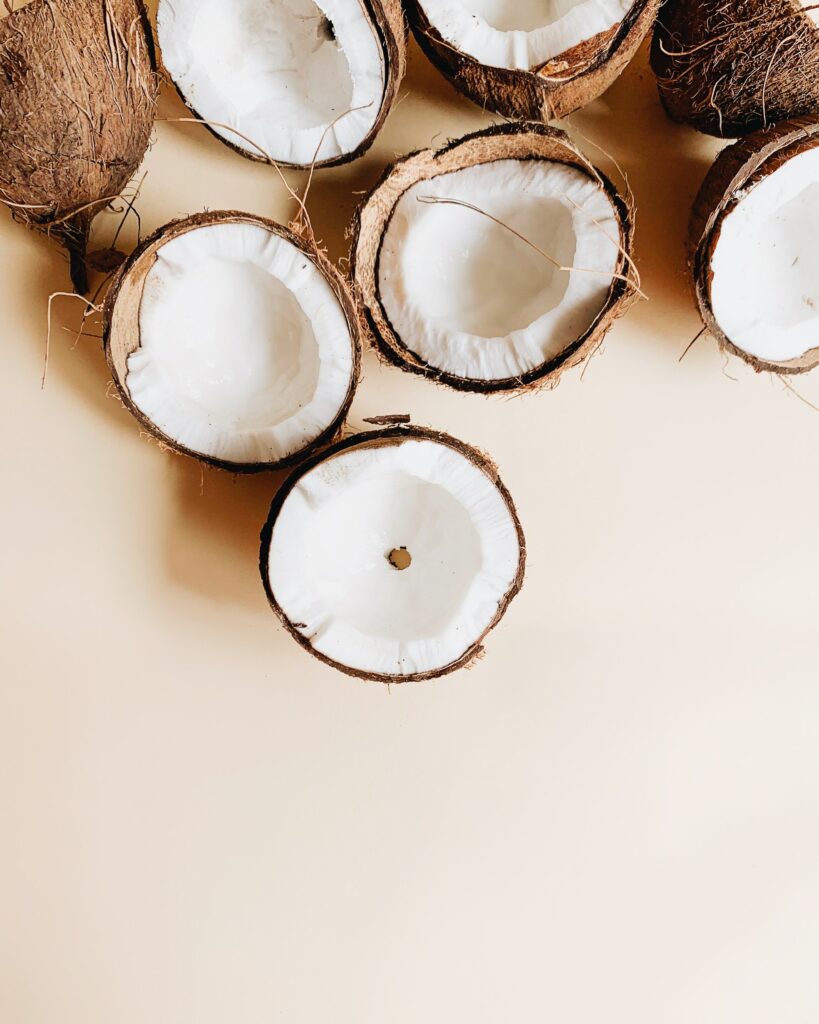
3. ground FLAX and chia seeds
Both ground flax and chia seeds are hormone balancing heroes. Chia seeds, in particular, ease PCOS symptoms because they help eliminate excess estrogen. Flaxseeds also do the same. Flax and chia are high in fiber, essential for proper elimination. They’re also rich in omega-3 fatty acids, supporting the health of our cell membranes. These membranes control the traffic of nutrients (and hormones) in and waste, out. Click for my coconut chia pudding recipe!
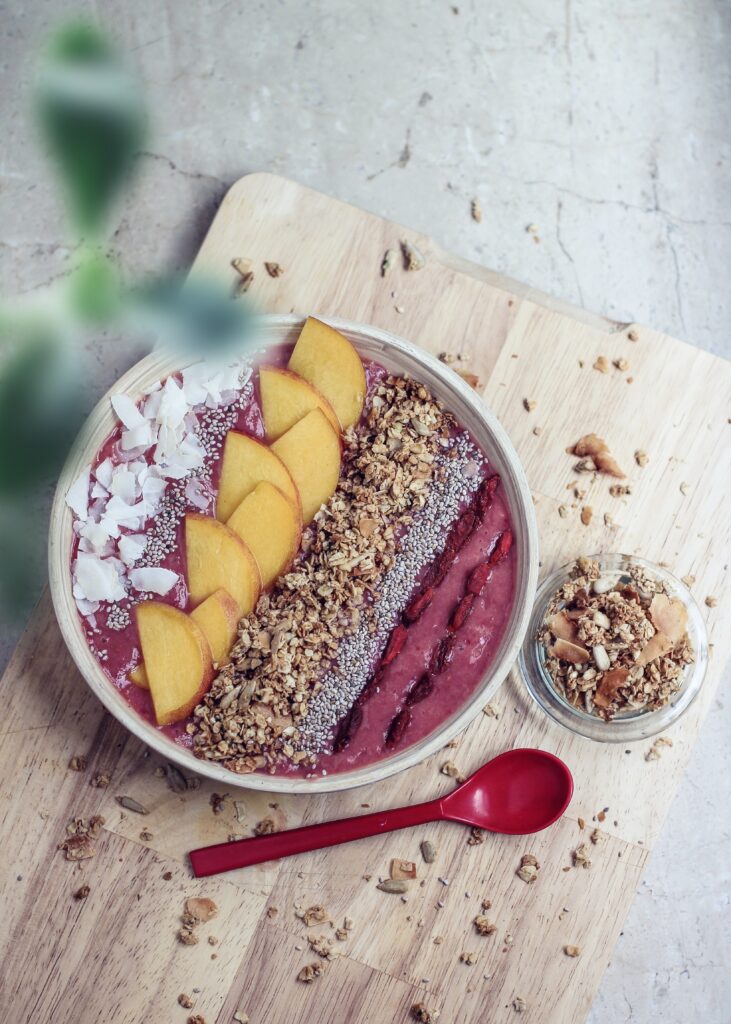
4. WALNUTS
Hormone balance is also about balancing omega-3 fatty acids and omega-6 fatty acids. Omega-6 fatty acids are pro-inflammatory, while omega-3 fatty acids are anti-inflammatory. We need some omega-6 fatty acids, but the standard American diet contains too many pro-inflammatory oils. By avoiding pro-inflammatory fats (like processed vegetable oils and processed foods containing them)—and increasing your omega-3 intake—you can get the right balance of building blocks for hormones. Eating walnuts is one of the ways to consume more omega-3 fatty acids! Walnuts also help stabilize blood sugar, which is key for hormone balance.
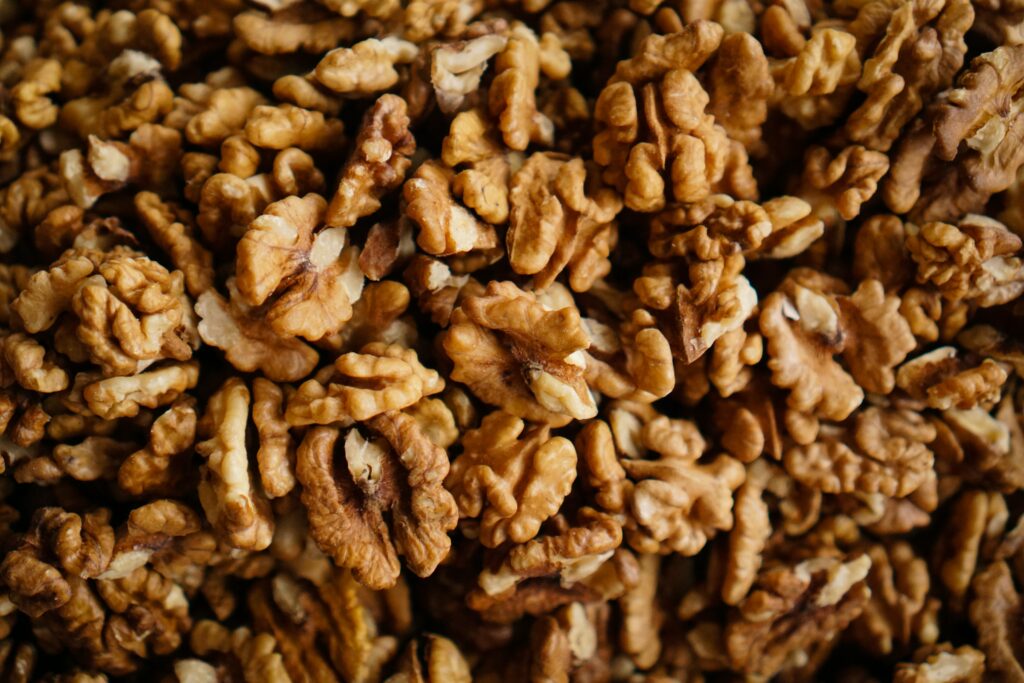
5. RAW CARROTS
Did you know that estrogen dominance is an underlying cause of PMS, hormonal acne, and fertility issues? Along with seed cycling, consider eating more carrots! Raw carrots, specifically, have been found to support healthy estrogen levels (thanks to their undigestible fibers). These fibers prevent the reabsorption of estrogen from the intestine, meaning the liver can more effectively regulate estrogen metabolism. Foods like carrots and coconut oil can have a huge impact on both hormones and immunity. You can make a raw carrot salad with one medium carrot, a drizzle of olive oil, a drizzle of melted coconut oil, a dash of apple cider vinegar, and a pinch of salt. Feel free to add chopped cilantro, basil, or dill! Simply grate your carrot and mix evenly with oil, vinegar, and salt.
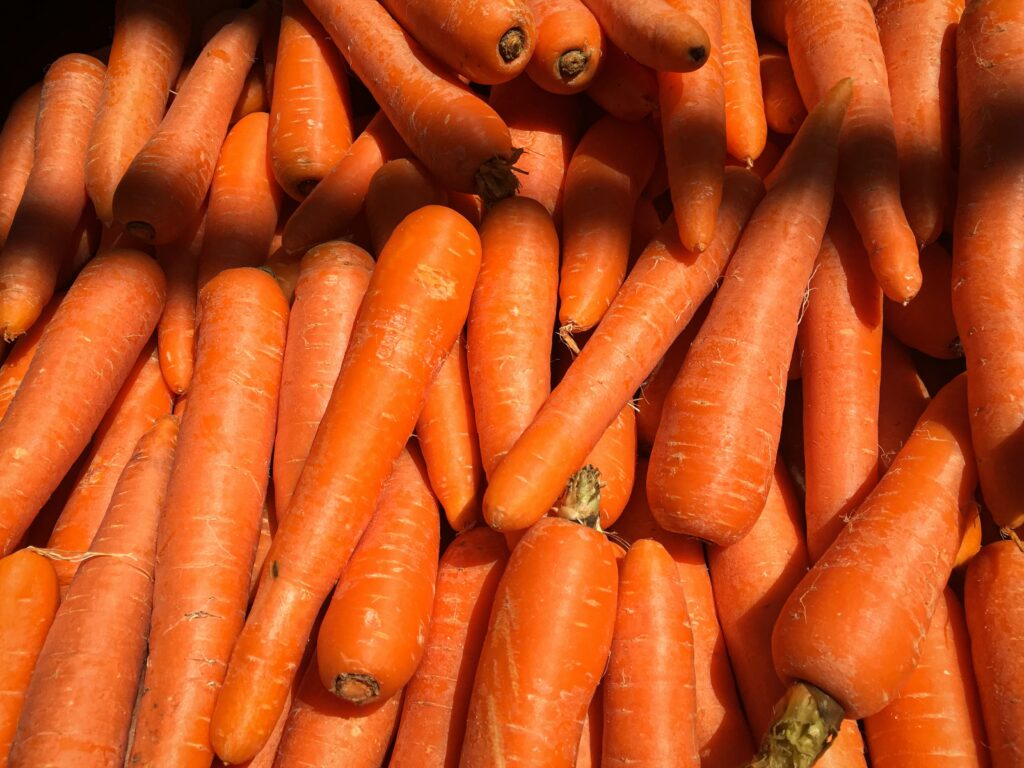
6. Citrus
When it comes to balancing progesterone levels in the body, citrus is king. Lemons, limes, oranges, and grapefruit contain vitamin C. And vitamin C has been shown to be vital for hormone production and maintenance, as it stimulates the production of progesterone levels. This is especially important during the luteal phase. You can enjoy citrus in many forms, but my favorite is via the adrenal cocktail! This unique combination of orange juice and coconut water helps balance potassium and electrolytes in the body.

7. high-quality animal protein
Like carbs and fat, protein is essential for supporting hormone health. Protein helps hormones communicate with different parts of the body. It’s a macronutrient, for a reason! Adequate protein intake is also essential for blood sugar balance, repairing DNA, and supporting a thriving metabolism. Furthermore, protein contributes to managing your body’s secretion of hunger hormones. It helps keep you satiated! The sky’s the limit when it comes to protein options: organic cottage cheese, organic chicken, grass-fed steak and beef, organic turkey, pasture-raise eggs, full-fat / organic dairy, wild-caught salmon, etc. When possible, choose organic, pasture-raised, or wild-caught animal protein. These are more nutritious and contain minimal pesticides.

8. Extra-virgin Olive oil
Like other healthy fats, the monounsaturated fats found in olive oil can help create more responsive and healthy cell membranes, allowing hormone communication to flow. Furthermore, the omega-3 fatty acids found in olive oil can reduce insulin resistance, a common feature of women with PCOS. Additionally, olive oil signals the brain to produce hormones that make you feel full, thus reducing your appetite. Last but not least, research shows that extra-virgin olive oil contains potent anti-inflammatory actions. These help decrease inflammation in the body, further supporting hormone balance. This is my favorite extra-virgin olive oil! Keep in mind that extra-virgin olive oil is the least processed form of olive oil. Due to this, it retains its natural antioxidants and vitamins, which are often lost during processing.
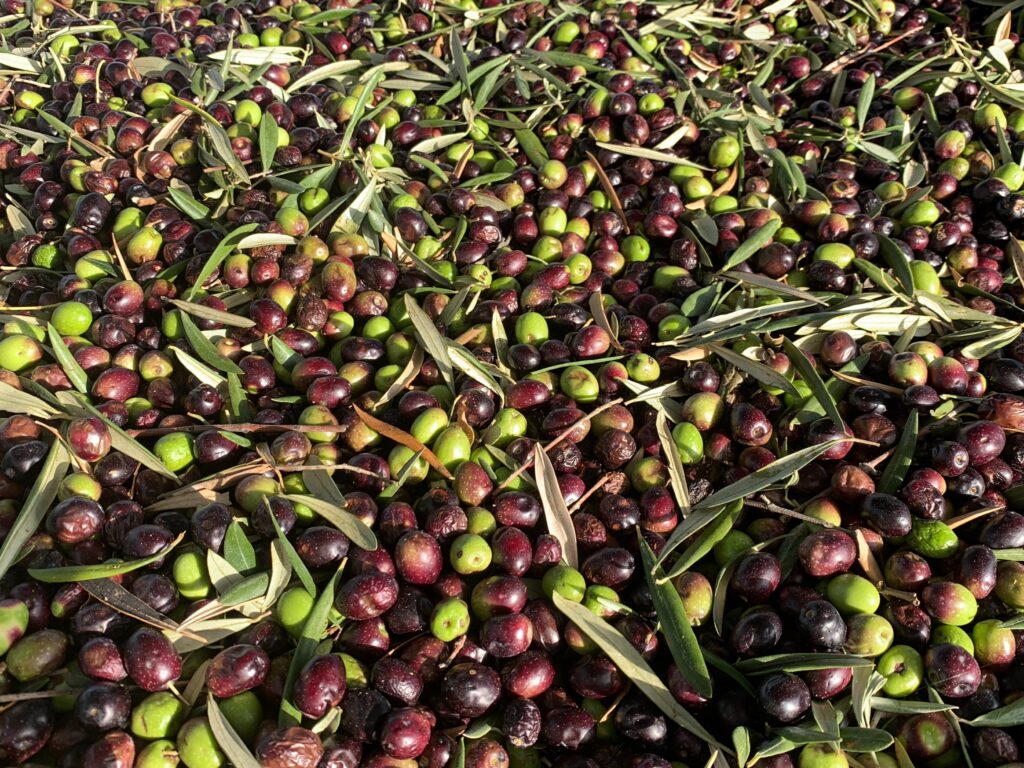
What about soy?
Soy is highly debated. It’s widely studied for its estrogenic and anti-estrogenic effects on the body. Studies may seem to present conflicting conclusions about soy, but this is largely due to the wide variation in how soy is studied. Good news! Results of recent population studies suggest that soy has either a beneficial or neutral effect on various health conditions. Soy is a nutrient-dense source of protein that can be consumed, beneficially, in moderation. When possible, opt for unprocessed, organic, and fermented soy. Think: tempeh, miso, and tamari. Caveat: women with estrogen-dominance are particularly sensitive to the phytoestrogens in processed soy (this includes endometriosis, PCOS, fibroid sufferers, and those with ovarian cysts). At any rate, it’s best to chat about your soy intake with your healthcare provider.
Images courtesy of Unsplash. This article contains affiliate links. Thank you for supporting Wellness with Edie. This article is for informational purposes only. It is not, nor is it intended to be, a substitute for professional medical advice, diagnosis, or treatment and we recommend that you always consult with your healthcare provider.



Leave a Reply